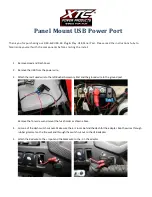
In addition, the total weight of the
vehicle, all passengers, accessories,
cargo, and trailer tongue load must
not exceed the Gross Vehicle
Weight Rating (GVWR) or the Gross
Axle Weight Rating (GAWR). Both
are on a label on the driver’s
doorjamb.
If you carry large items that
prevent you from closing the
tailgate or the hatch glass, exhaust
gas can enter the passenger area.
To avoid the possibility of
, follow the
instructions on page
.
Distribute cargo evenly on the
floor of the cargo area, placing the
heaviest items on the bottom and
as far forward as possible. Tie
down items that could be thrown
about the vehicle during a crash or
sudden stop.
If you carry any items on a roof
rack, be sure the total weight of
the rack and the items does not
exceed the maximum allowable
weight. Please contact your dealer
for further information.
Store or secure all items that could
be thrown around and hurt
someone during a crash.
Be sure items placed on the floor
behind the front seats cannot roll
under the seats and interfere with
the driver’s ability to operate the
pedals or seat.
Keep the glove box closed while
driving. If it is open, a passenger
could injure their knees during a
crash or sudden stop.
If you fold up or down the rear
seats, follow the instructions
above and be sure to keep all
cargo near the windows below the
bottom of the windows. If cargo is
higher, it could interfere with
proper operation of the side
curtain airbags.
50
Carrying Cargo
carbon
monoxide poisoning
Carrying Cargo in the Cargo Area
or on a Roof Rack
Carrying Items in the Passenger
Compartment
140
04/07/02 15:32:58 31S9A630 0145
















































